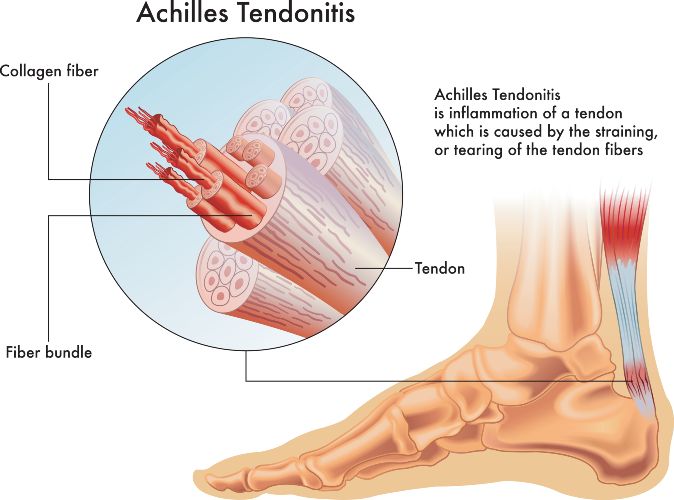
Achilles Tendon Pain / Injury
Do you get sharp, shooting or stabbing pain in the back of your heel? Maybe you experience dull aches or stiffness in your Achilles tendon that refers up into your calf. Are the symptoms worse during the first few steps when getting up in the morning or after sitting down for extended periods of time?
Early evaluation and intervention are always recommended for Achilles tendon problems even the symptoms are not debilitating. An ordinary symptom such as calf tightness almost always get overlooked but can contribute to tearing of Achilles tendon down the track if not managed appropriately. Delaying Achilles tendon treatment could lead to irreversible tissue damage and long-term rehabilitation.
What is the Achilles tendon?
The Achilles tendon is a tough, yet flexible band of connective tissue made of collagen which connects the calf muscle to the heel bone. It is the largest and strongest tendon in the human body that is essential for supporting any weight-bearing activities. Keeping your Achilles tendon and the adjacent calf muscles strong and flexible is perhaps the single best thing you can do to minimize pain and injury in the lower body.
Often, you hear Achilles Tendonitis, Tendinosis, and Tendinopathy; what do these terms mean?
When dealing with Achilles tendon pain, people often confuse with the term tendonitis, tendinosis, and tendinopathy. These terms are used to describe different tendon conditions including inflammation, degeneration, and an acute injury. As a treatment for these tendon conditions varies, so it is important to accurately diagnose the problem before commencing any treatment.
Tendinopathy means a disease or disorder of a tendon. It is typically used as a general term to describe any tendon pathologies, which include tendonitis and tendinosis.
Tendinitis is the inflammation of a tendon and is often the result of acute micro-tears that happen when the muscle-tendon unit is overloaded with a force that is too sudden and or heavy. This is when we may not want to over-stretch the tendon when there are possibly tears. Stretching the Achilles tendon when it is torn could do more harm and delay healing. This is when the proper diagnosis is essential.
Tendinosis is the result of failed healing response of the tendon due to chronic repetitive strain. This leads to changes to the actual structure or composition of the tendon. The collagen fibers of tendon become hard and inelastic, making it susceptible to pain, tears or even rupture.
Our sports podiatrists commit to ongoing professional training, emphasis on evidence-based and most up-to-date clinical assessment and management of lower limb pain and injury including Achilles tendinopathy.
Why do I get Achilles tendon injury?
Excessive loading of the Achilles tendon can be caused by one or more of the following factors:
Incorrect footwear
A sudden increase of physical activity
Poor training/running techniques
Overtrained
Overweight
Hard or uneven training surface
Biomechanical factors include:
Foot and ankle joint stiffness
Joint misalignment
Weak and tight calf muscles
Excessive foot pronation
High arches or flat feet
Our treatment approach focuses on reducing the excessive loading on Achilles tendon and restoring normal tissue function. We specialize in a range of treatment techniques to prevent such condition, provide relief of pain, promote proper tissue healing and correct the underlying cause(s). Most common treatment modalities that we use at Phoenix Podiatry for Achilles tendonitis are:
Low Level Laser Therapy
Dry needling for trigger points
Muscular tension release via massage
Custom Foot Orthoses
Kinesiology Sports Taping
Corrective / Rehabilitation Exercise
